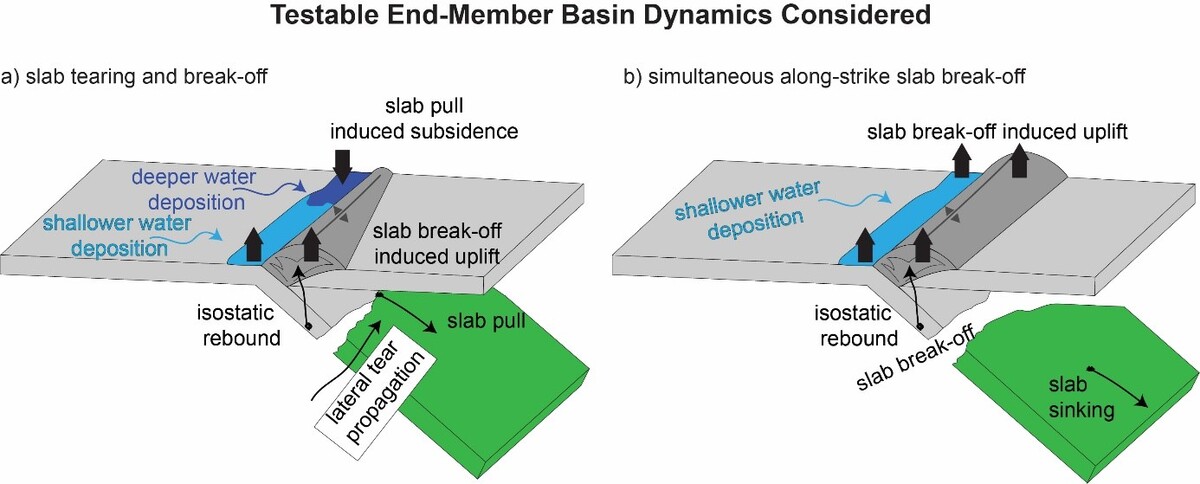Did the Dinaric Alps force an arid climate and speciation during Miocene Climatic Optimum?
Causal links between the rise of large mountain ranges such as the Andes and Himalayas and climate have been demonstrated. There, a significant uplift provokes climate change leading to contrasting depositional environments and fauna speciation across the range. Considering the sedimentary and paleontological records we test the hypothesis that this relationship exists and affects deposition and speciation to a similar degree in the lower mountain ranges such as the Dinaric Alps (Dinarides) in SE Europe. Sedimentological and paleontological data suggest that the topographic uplift of the Dinarides played an important role in the development of the regional contrasting, i.e. arid vs humid conditions and fauna distribution across the Dinarides during the Miocene Climatic Optimum (MCO). However, the analysis of causal relations is greatly hampered by the uncertainty about whether the basins across the mountain range were coeval or not. This uncertainty lies in very poor age constraints of the sedimentary successions in the internal part of the Dinarides. In this study, we will test the hypothesis that the growth of the Dinarides influenced contrasting climatic conditions leading to contrasting depositional environments and fauna speciation in the basins across the Dinarides during the MCO. This hypothesis will be tested by a systematic dating of the basins located in the internal part of the Dinarides using U-Pb dating of tuff layers and carbonate sediments. Furthermore, this will be supported by the revision of the temporal and spatial distribution of fauna across the range. Finally, integration of the new numerical age constraints provided by this work with the existing numerical ages (mostly constrained to the external part of the Dinarides) will allow us an orogen-wide correlation of sedimentary and faunal successions in the isolated basins. The resulting data framework will enable us to precisely assess causal links between the growth of the “small” mountain ranges, such as the Dinarides, the regional climate change, and the adaptive radiation of its biota.
Integrated records of tectonic and climate interactions in the Northern Alpine Foreland Basin sedimentary architecture
This project addresses Theme 2 „Surface response to changes in deep structure on different time scales“ by focusing on the effect of slab dynamics on the Northern Alpine Foreland Basin (NAFB) architecture. In this study, we will test the hypothesis that slab tearing and break-off influence the along-strike heterogeneous architecture of the NAFB. The hypothesis will be tested by (1) 3D simulation of depositional dynamics of the foreland basin above slab break-off and tearing using an integrated geodynamic and 3D stratigraphic (depositional) model, and by (2) evaluating end-member model scenarios through detailed comparison to the present day NAFB architecture. This state-of-the-art modelling approach combined with observational geological and geophysical data will enable us to separate and quantify the effect of the slab break-off and tearing on the NAFB architecture. It will also allow us to assess to which extent slab tearing and break-off can be overprinted by other tectonic processes, climate change, and sea level variations. Our research outputs will serve as a ground for testing different hypotheses derived from field geological and geophysical studies, and geodynamic, landscape and climate evolution models within 4DMB Program.

